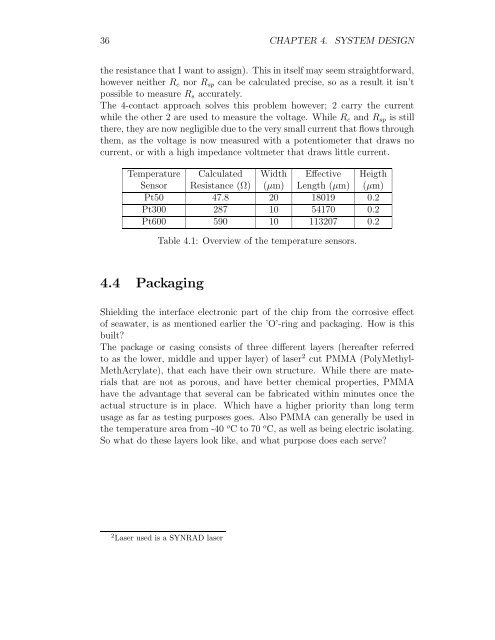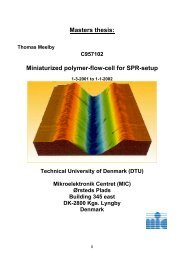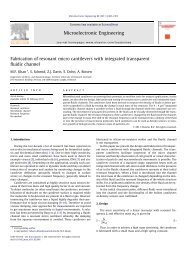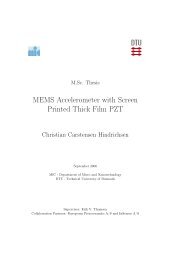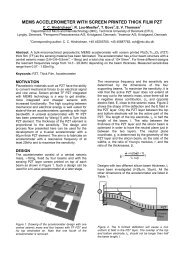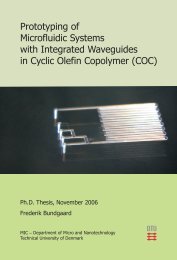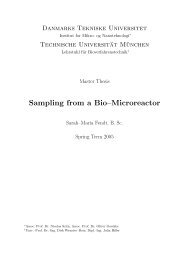Development of a Oxygen Sensor for Marine ... - DTU Nanotech
Development of a Oxygen Sensor for Marine ... - DTU Nanotech
Development of a Oxygen Sensor for Marine ... - DTU Nanotech
You also want an ePaper? Increase the reach of your titles
YUMPU automatically turns print PDFs into web optimized ePapers that Google loves.
36 CHAPTER 4. SYSTEM DESIGN<br />
the resistance that I want to assign). This in itself may seem straight<strong>for</strong>ward,<br />
however neither Rc nor Rsp can be calculated precise, so as a result it isn’t<br />
possible to measure Rs accurately.<br />
The 4-contact approach solves this problem however; 2 carry the current<br />
while the other 2 are used to measure the voltage. While Rc and Rsp is still<br />
there, they are now negligible due to the very small current that flows through<br />
them, as the voltage is now measured with a potentiometer that draws no<br />
current, or with a high impedance voltmeter that draws little current.<br />
Temperature Calculated Width Effective Heigth<br />
<strong>Sensor</strong> Resistance (Ω) (µm) Length (µm) (µm)<br />
Pt50 47.8 20 18019 0.2<br />
Pt300 287 10 54170 0.2<br />
Pt600 590 10 113207 0.2<br />
4.4 Packaging<br />
Table 4.1: Overview <strong>of</strong> the temperature sensors.<br />
Shielding the interface electronic part <strong>of</strong> the chip from the corrosive effect<br />
<strong>of</strong> seawater, is as mentioned earlier the ’O’-ring and packaging. How is this<br />
built?<br />
The package or casing consists <strong>of</strong> three different layers (hereafter referred<br />
to as the lower, middle and upper layer) <strong>of</strong> laser 2 cut PMMA (PolyMethyl-<br />
MethAcrylate), that each have their own structure. While there are materials<br />
that are not as porous, and have better chemical properties, PMMA<br />
have the advantage that several can be fabricated within minutes once the<br />
actual structure is in place. Which have a higher priority than long term<br />
usage as far as testing purposes goes. Also PMMA can generally be used in<br />
the temperature area from -40 o C to 70 o C, as well as being electric isolating.<br />
So what do these layers look like, and what purpose does each serve?<br />
2 Laser used is a SYNRAD laser


